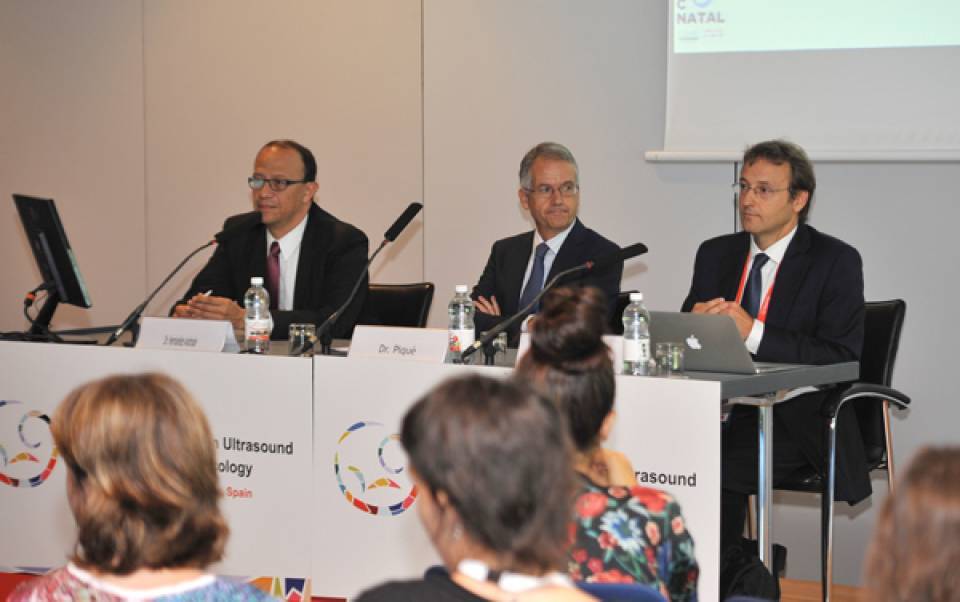The team presented the results of a scientific study in which they blindly tested this new technology in 150 high-risk cases. The results showed that the ultrasound test reaches similar accuracy results to the obtained by analyzing amniotic fluid in a laboratory. The technology was developed by Transmural Biotech, a spin-off of Hospital Clínic and University of Barcelona, and it is based on an original idea by the Clinic team about the use of computerized analysis of ultrasound in fetal lungs. This study represents a significant advance in the development of non-invasive techniques in pregnancy and the first time ever that a test shows that noninvasive fetal ultrasound has replaced a laboratory analysis requiring a puncture of the uterus.
About the technology
The computerized analysis of fetal ultrasound was just a visionary idea in 2006 when under the leadership of Eduard Gratacós began the project in Fetal R&D. A multidisciplinary team initiated several studies to demonstrate the proof of concept. In a second stage, the real technology was developed in Transmural Biotech, the spin-off from the Clínic, that got the significant private investment needed to make a good idea become a real medical technology. After 8 years of work the solution named QuantusFLM® has been launched with the aim to revolutionize personalized medicine and the management of pregnancies with a high risk of prematurity.
This story illustrates the results of investing in excellence and the success of two models, the one of multidisciplinary teams such as Fetal R&D, internationally recognized with high-level technology projects, and the creation of small companies, or spin-off, allowing transferring science to the industry to turn it into solutions that improve health and bring wealth to our society.
The relevance of the problem in perinatal health
Respiratory problems occur because the baby's lungs are not ready (or "mature" in medicine) to breath outside the womb. This problem may be more or less severe, but affects up to a million babies worldwide and are the main cause of admission to the ICU and neonatal death. The risk varies according to the fetal maturity reached by the lungs. Not all breathing problems are preventable like spontaneous preterm births and others where there is no choice but to end the pregnancy to avoid serious complications in mother or fetus. However, in other cases there are problems where ending pregnancy prematurely is recomended, but it can be delayed a few days to reduce the risk of respiratory problems by using medication to accelerate lung maturity. In these situations, knowing the risk of respiratory problems at birth influence the decision about the need of terminating the pregnancy.
So far, the only method to determine fetal lung maturity was an amniotic fluid extraction. The maternal risks and the inconvenience of this test led to a gradual reduction of its use. However, the American Association of Obstetrics and Gynecology warns that breathing problems are still important and recommends assessing lung maturity in pregnancies that are planned to end before the 39 weeks, especially if an elective caesarean is the option.
The introduction of this new test as a reliable and safe alternative to amniocentesis will revolutionize the clinical management of many situations in which it is considered the termination of pregnancy, but doubting about the risks for the baby. Up to 3% of pregnancies could benefit from this test, which only the United States and Europe represents 300 thousand pregnant per year.

